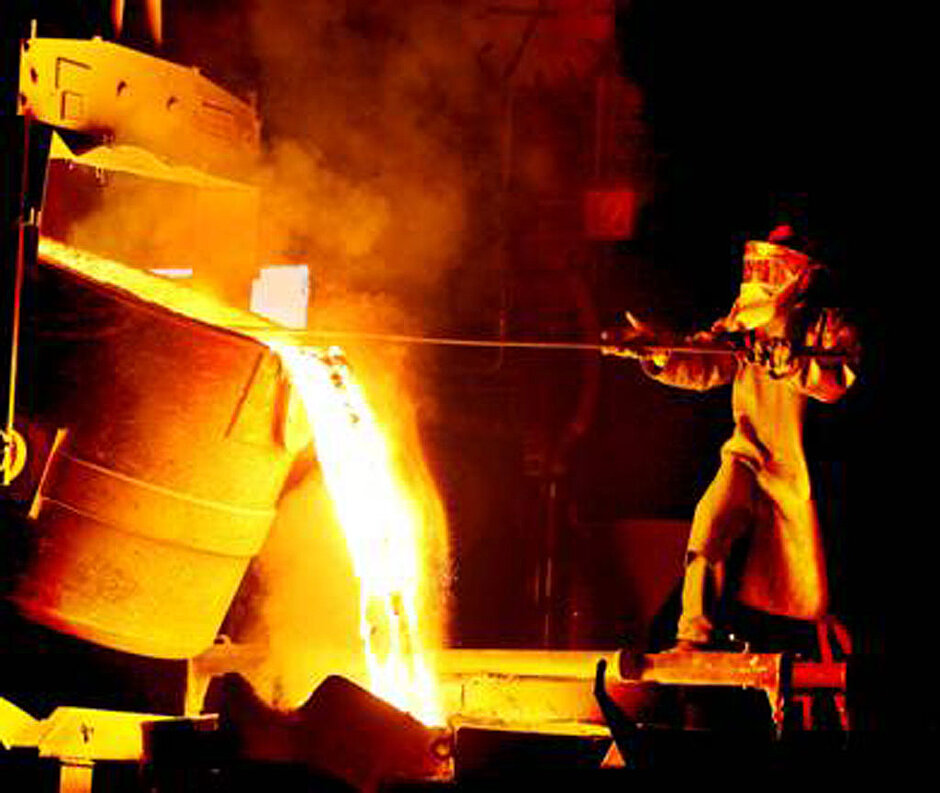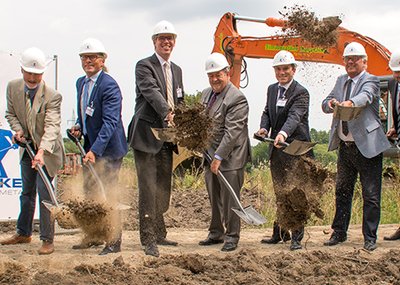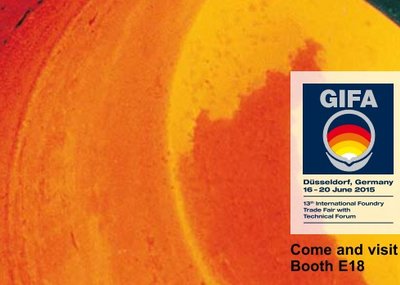Work is currently underway on a complete induction furnace system for a customer in Sweden. Rated for a melting output of 15 t/h of cast iron, the plant is intended to produce various cast iron grades including ductile cast iron (SG iron).
Our project comprises a 12-tonne coreless furnace system in a DUOMELT configuration that will be powered via an advanced frequency converter capable of handling 8,000 kW. Thanks to multifrequency technology, the furnaces can be run at either 250 or 125 Hz at the user's choice.
The lower of these frequencies serves particularly for melt carburizing or stirring down alloying elements. Both processes are accelerated by the more vigorous bath movement.
The two coreless furnaces will each be fitted with a stepless back-tilting device which allows the unit to be inclined by 20° for more convenient de-slagging. Furthermore, our scope of supply will include the water re-cooling system and two charging chutes equipped with add-on hoppers for holding alloying agents.
In addition to the JOKS melt processorinterfaced with a spectrometer, a JOKSGATT system will be employed for controlling and monitoring the charging process. Connectivity of the JOKS system to the higher-level plant management network is ensured via an Ethernet link.
The entire workflow from charging to pouring proceeds as follows:
Charge material is picked up in accordance with the selected recipe by the charging crane using its electric magnet. This material is then weighed and placed in the charging chute. Once all charge materials specified by the recipe are present in the chute, the latter moves automatically to the alloying elements station. The JOKS-GATT programme then computes the amount of alloying elements to be added in order to obtain the desired melt composition. Accordingly, these elements are then weighed and conveyed to the add-on hopper mounted on the charging chute.
Upon receipt of a signal the chute moves to the empty furnace, docks to the exhaust hood and starts loading the furnace with charge materials and alloying agents. The electric power input is activated and controlled to match the ongoing charging process.
Upon termination of the charging cycle the melt is heated to a temperature of around 1,500 °C. De-slagging is carried out and a molten metal sample is taken for analysis. The spectrometer transmits the result of this analysis directly to the melt processor, which calculates the amounts of alloying elements still to be added if the melt composition does not conform to the final specification.
Alloying elements are then added if necessary. Depending on their type and quantities, the power converter may be switched to 125 Hz mode for this operation to facilitate stir-down.
The melt is then heated to the exact tapping temperature, whereupon it can be poured into the individual ladles.
The entire process is controlled, monitored and documented via the JOKS and JOKS-GATT systems installed.
auch verfügbar in: <link record:tt_news:13006 internal-link>![]()
![]()
###COMPANY_LINK### <link record:tx_browserdirectory_directory:73 internal-link>![]() OTTO JUNKER GmbH
OTTO JUNKER GmbH




